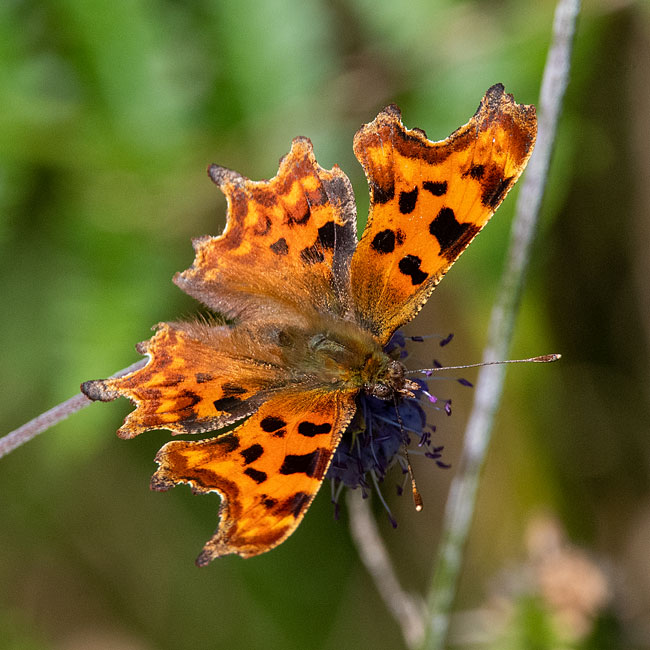
|
Comma Butterfly
|
||
|
Taken at Bracklinn Falls, Callander on 4th September 2023 using Nikon D500 with Sigma 600 mm zoom lens.
|
 |
|


| Taken at Strathclyde Park on 11th July 2023 using Apple iPhone 12 mini |  |

| Comma Butterfly. |
| Species: Order: Family: Local Names: |
Polygonia c-album. Lepidoptera. Nymphalidae. |
| Food: Body Length: Habitat: Flies/Found: |
This
butterfly was once widespread over most of England and Wales, and parts
of southern Scotland, but by the middle of the 1800s had suffered a
severe decline that left it confined to the Welsh border counties. It is thought that the decline may have been due to a reduction in Hop farming, a key larval foodplant at the time. Since the 1960s this butterfly has made a spectacular comeback, with a preference for Common Nettle as the larval foodplant. Adults feed primarily on Thistles, Bramble, Ivy, Knapweeds and Privet. 50 - 64 mm. Mainly woodland. Can be seen at any time of the year, occasionally awakening on warm winter days. The butterfly emerges from hibernation in March, giving rise to the next generation which appear at the end of June and start of July. |